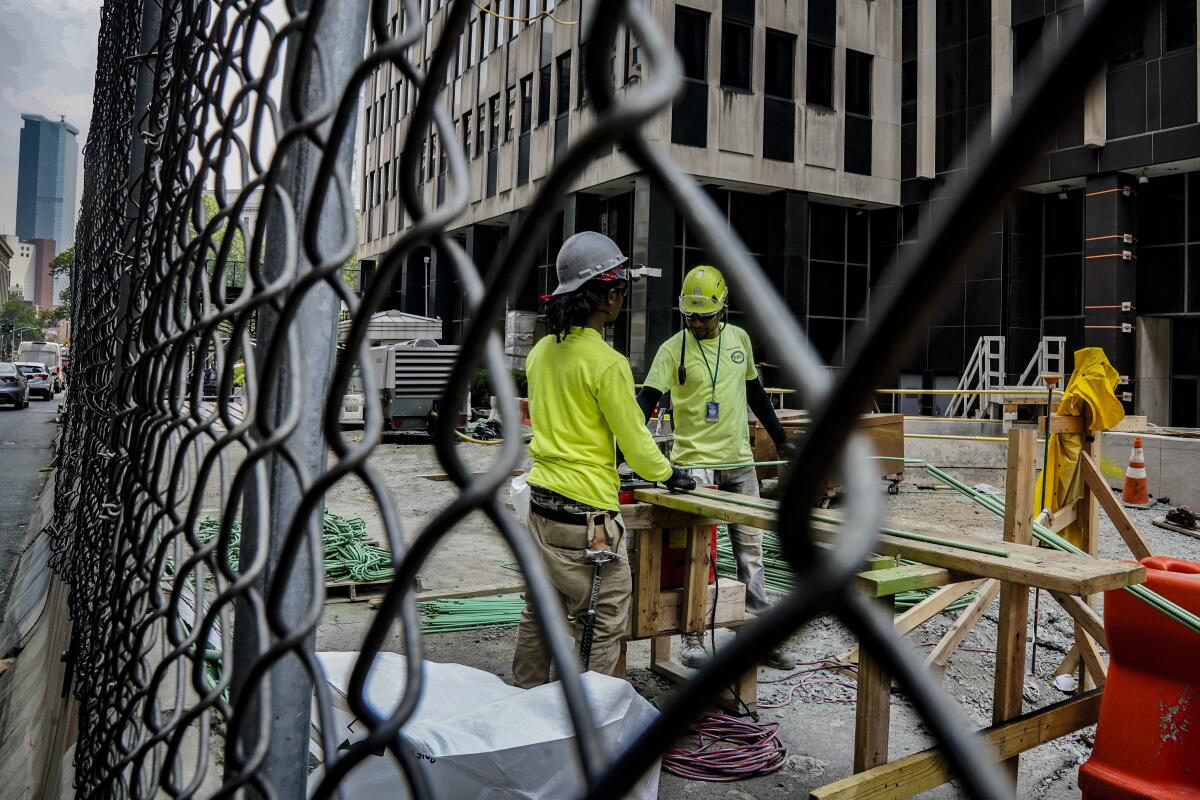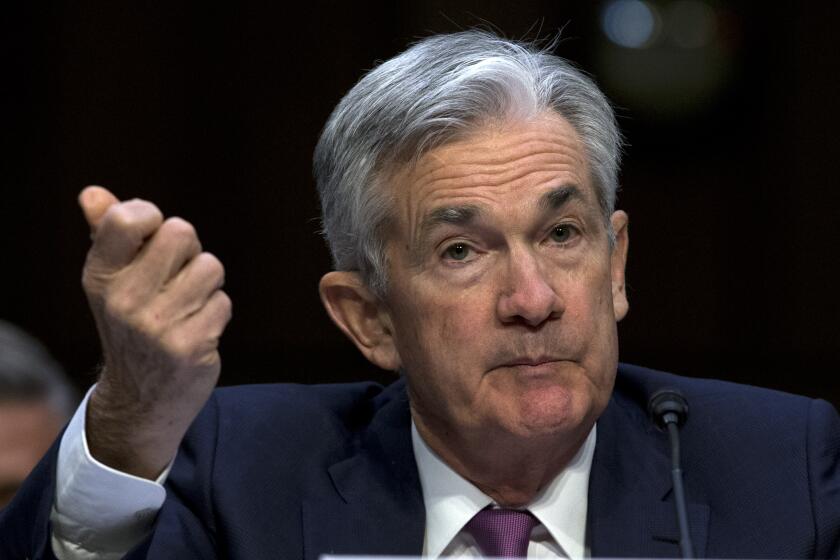Hiring slowed in June in sign of a durable labor market despite Fed rate hikes

- Share via
America’s employers pulled back on hiring but still delivered another month of solid gains in June, adding 209,000 jobs, a sign that the economy’s resilience is confounding the Federal Reserve’s drive to slow growth and inflation.
The latest evidence of economic strength makes it all but certain that the Fed will resume its interest rate hikes later this month after having ended a streak of 10 rate increases intended to slow inflation.
The June hiring figure reported by the government Friday is the smallest in 2½ years. But it still points to a durable labor market that has produced a historically high number of advertised openings. The unemployment rate fell from 3.7% to 3.6%, near a five-decade low.
Most of the details in the report underscored the job market’s durability. The length of the average work week edged up, a sign that customer demand is strong enough to keep employees busy. And wage growth accelerated: Hourly pay is up 4.4% from a year ago. Wages are now growing faster than year-over-year inflation, which amounted to 4% in May.
The wage data will likely raise concerns at the Fed, which is worried that faster pay gains will perpetuate inflation by leading companies to raise prices to offset their higher labor costs. The Fed wants to see hiring and wage increases slow before halting its rate hikes.
Inflation’s relentless surge didn’t merely persist in June. It accelerated. Here’s why.
The economy is beset by high interest rates, elevated inflation and nagging worries about a possible recession resulting from the Fed’s ever-higher interest rates. Yet many industries keep adding jobs to keep up with consumer spending and restore their workforces to pre-pandemic levels.
The solid pace of hiring and rising wages have enabled consumers to keep spending on services, from traveling to dining out to attending entertainment events. While economists have repeatedly forecast a recession for later this year or next year, a downturn is unlikely as long as companies keep steadily filling jobs.
The Fed has jacked up its key interest rate by a sizable 5 percentage points — the fastest pace of rate hikes in four decades. Those increases have made mortgages, auto loans and other forms of borrowing significantly more expensive.
Some Fed officials have said they are looking for signs of what they describe as better balance in the job market, by which they mean the supply and demand for workers would become more equal. After the economy emerged from the pandemic, the number of available jobs surged above 10 million — the highest level on record.
The burgeoning demand for labor coincided with millions of Americans dropping out of the workforce to retire, avoid COVID, care for relatives or prepare for new careers. With companies struggling to fill openings, many offered sharply higher pay and better benefits to attract or keep employees.
Even Federal Reserve economists know that wages had no effect on inflation. But that doesn’t stop Fed Chair Jerome H. Powell from harping on labor costs and ignoring the real culprits.
There has been some progress toward a better alignment of supply and demand: More people have started looking for work in recent months, and most of them have found jobs. As the supply of workers has improved, businesses have said they’re seeing more people apply for open positions. The number of job openings dropped in May, a sign that demand for workers is gradually cooling, though it remains above pre-pandemic levels.
In a sign of a potential slowdown in the job market, fewer Americans are quitting their jobs to seek new positions. Quits had soared after the pandemic. Millions of Americans had sought more meaningful or better-paying jobs, stoking the pressure on companies to raise pay to keep their employees. In May, about 4 million Americans left their jobs, up from April’s figure but below a peak of 4.5 million reached last year.
Still, other recent reports suggest that the economy has continued to expand and that demand for workers remains high. On Thursday, a survey of service providers — including banks, restaurants and shipping companies — found that the sector expanded at a healthy clip in June and that services companies accelerated their hiring compared with May.
More to Read
Inside the business of entertainment
The Wide Shot brings you news, analysis and insights on everything from streaming wars to production — and what it all means for the future.
You may occasionally receive promotional content from the Los Angeles Times.










